MotoGP’s all-electric racing series enters a new, and much faster, era with Ducati's purpose-built V21L on the 2023 MotoE grid
An electric-mobility sceptic or not, there can be no doubting MotoE has several things going for it in 2023. Now in its fifth year, the status of the series has gone from a World Cup to a World Championship for the first time. To gain that status, it has expanded from 12 races at six GPs to 16 races at eight events this term. Most importantly, it now has Ducati providing spec machinery for all 18 participants.
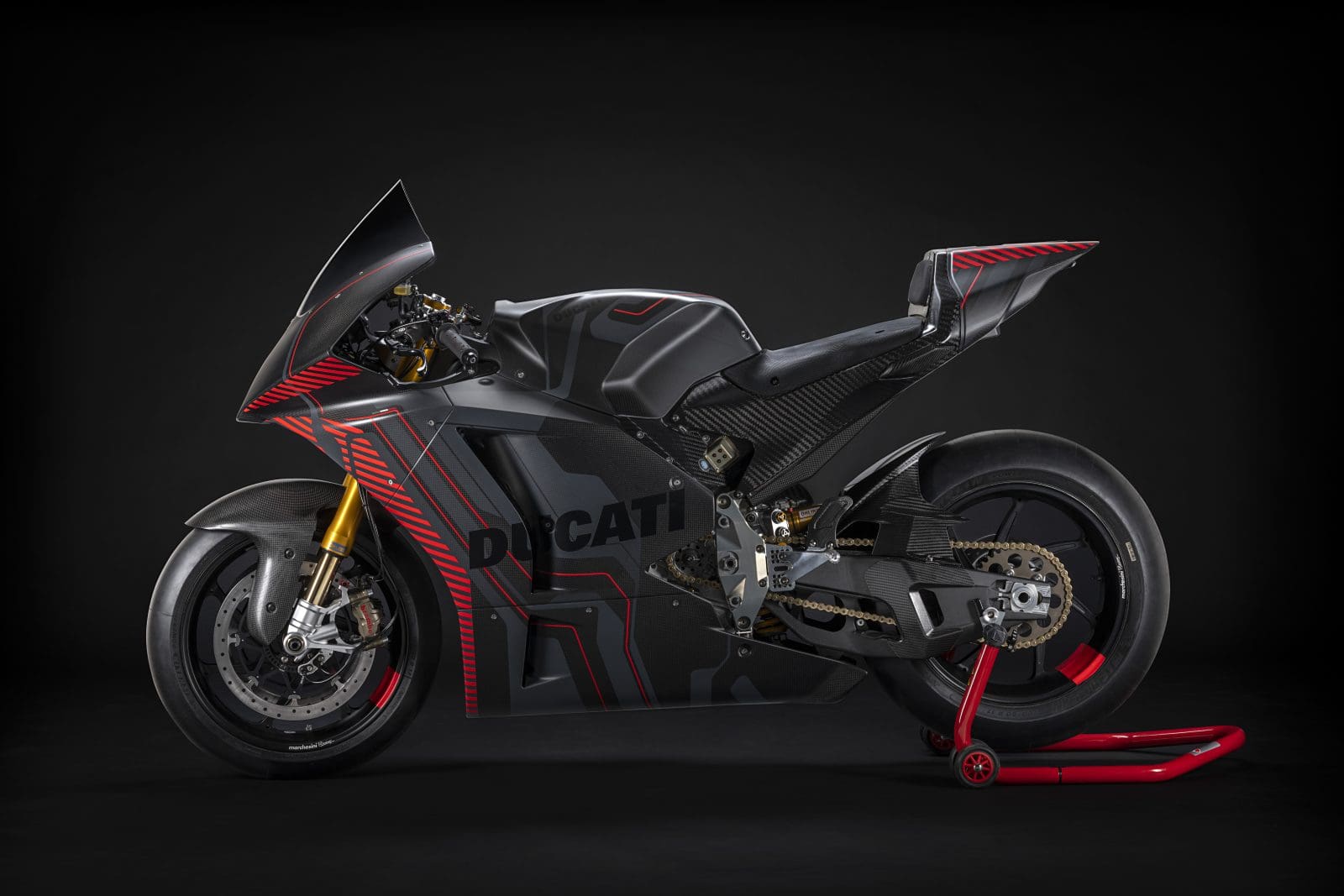
This could be a game changer in just how two-wheel electric racing is perceived – not just by fans but by other motorcycle manufacturers, now uneasy at seeing a direct competitor gaining experience in what will come to be a lucrative global market.
“In the past the races were really entertaining. But it was really difficult to attract the attention of people,” said Nicolas Goubert, MotoE Executive Director. “Having a famous brand like Ducati involved for sure will help it grow.”
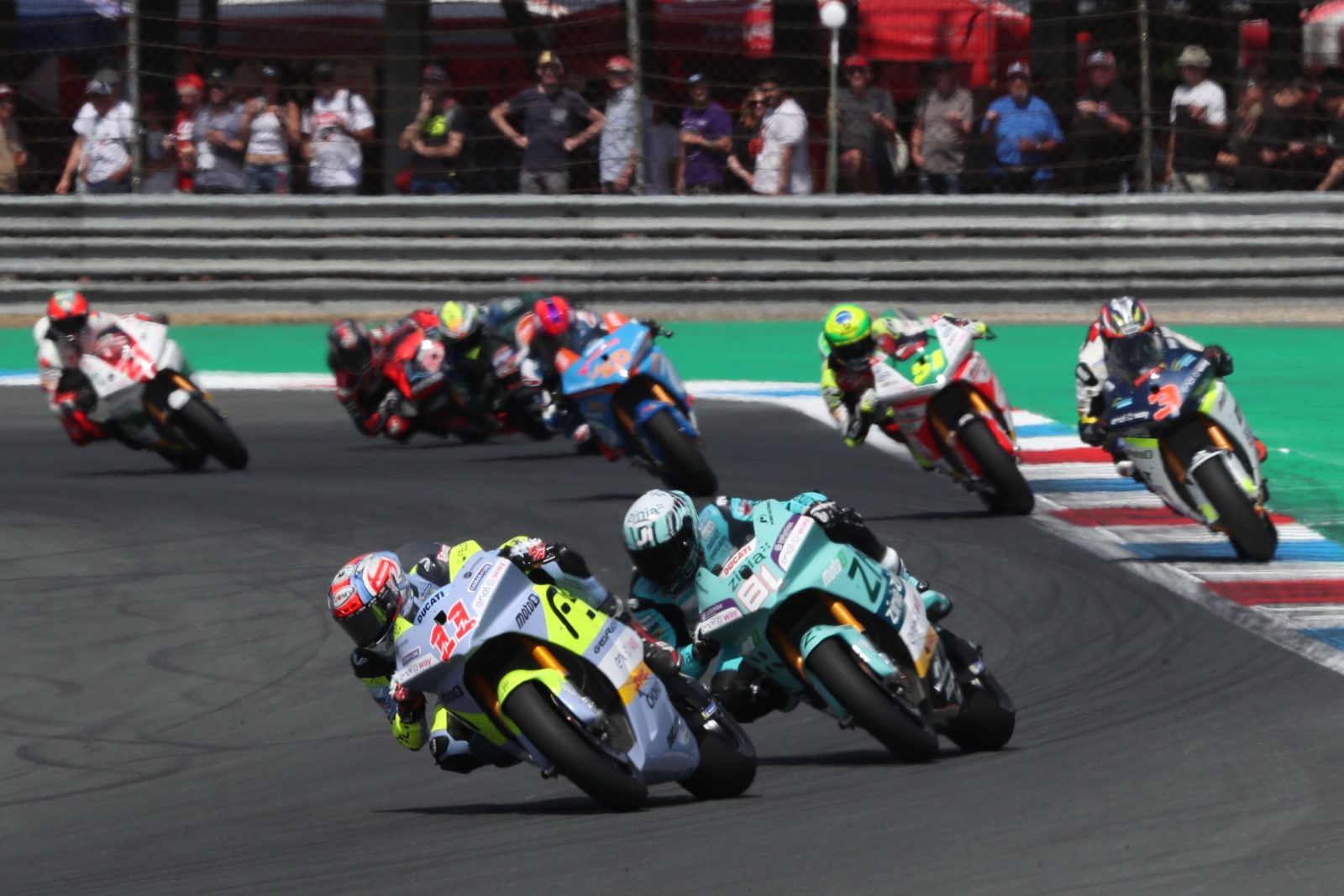
Matteo Ferrari leads race 1 at the 2023 Dutch GP
Ducati has taken the task of creating its first electric vehicle with all the seriousness it pours into its eight-bike MotoGP program. The Italian factory was given a three-point brief by series organiser Dorna last year. First, it had to design a bike capable of running for a 15-minute race at full power, no matter the temperature, weather or circuit. That bike was required to run similar – or better – lap times to the Moto3 class, just as previous provider Energica did. And lastly, it was given a target of weighing less than 237kg.
The Ducati V21L has not just ticked all three boxes, it has been a step up on any electric bike built before in terms of lightness and design. It has utilised a host of former grand prix or world Superbike race winners (Alex de Angelis, Chaz Davies and, to a lesser extent, current MotoGP test rider Michele Pirro) to hone its potential on the test track. And the early results have been impressive. It boasts 112kW (150hp), goes from 0-100km/h in 2.6sec and has a top speed of 270km/h. Most of all, it weighs in at 225kg, almost 40kg lighter than the 2019 Energica EGO Corse, the first bike used in the MotoE World Cup.
“We all know one of the weak points of electric mobility is the weight of the vehicles, car or bike,” said Goubert. “We knew that was a point we wanted to improve the most. The weight is very impressive. If you compare it to endurance bikes at the start of their stints in the Suzuka 8 Hours, or the Le Mans 24 Hours, they are around 200kg. The difference is not night and day anymore.”
Another improvement for 2023 is the cooling system. “The time you need to charge the bikes is more or less the same (40 minutes for 85 percent charge),” explained Goubert.
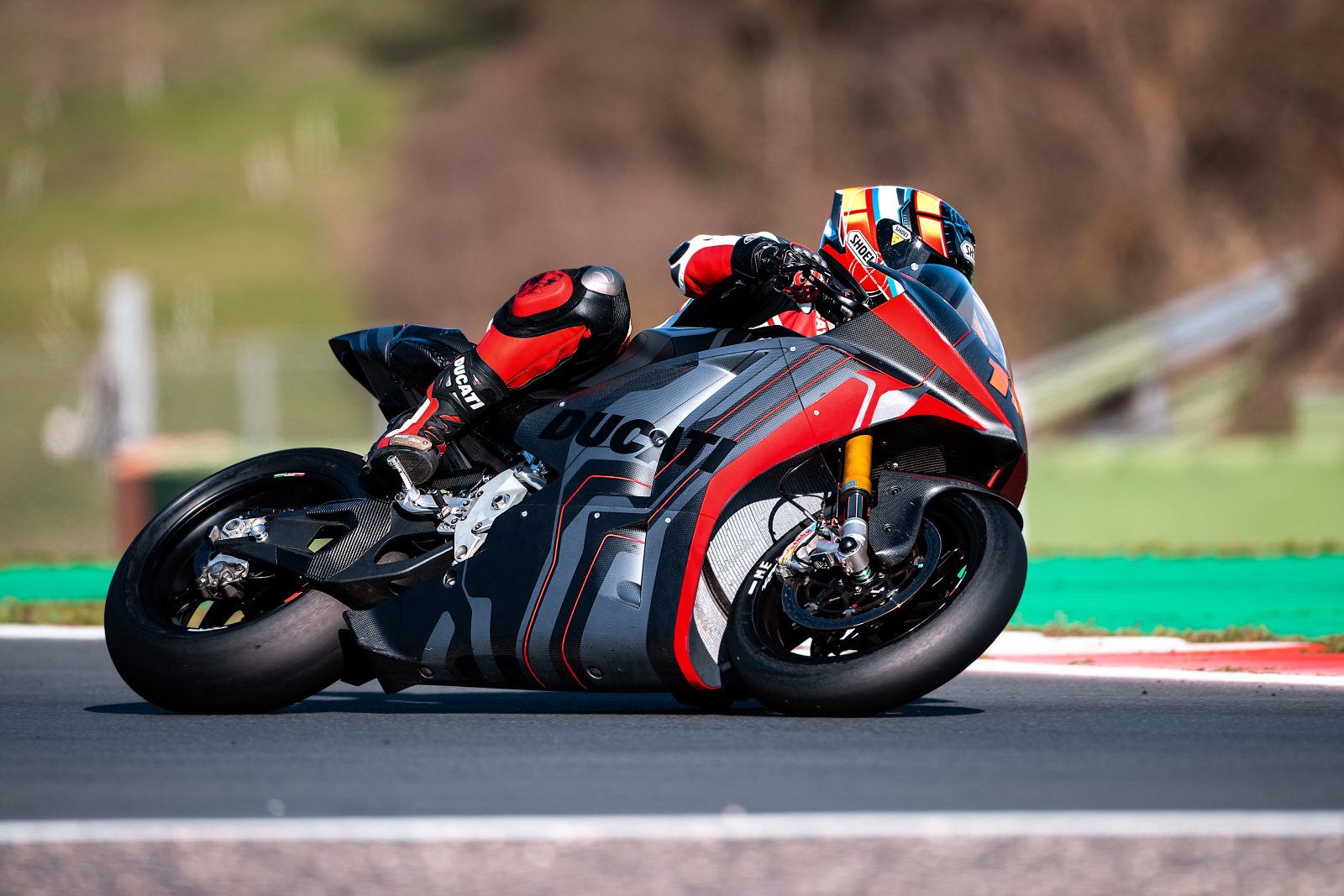
The V21L in testing mode
“The big difference is this bike is equipped with a liquid-cooled system. Before, we had to wait one hour after each session for the battery to cool down to start charging it. At the end of the charge, we had to wait another hour before going back to the track. Now you don’t need to wait for the temperature to go down before charging it.”
Energica’s bikes were road models converted into racing trim. The V21L is different – a full prototype, built from the bottom to top with the sole intention of racetrack performance. No great surprise then that lap times have been considerably faster. At preseason tests, the fastest MotoE machine was 0.4sec under the previous lap record for the class at the tight Jerez, and just over two seconds faster at the Circuit of Barcelona-Catalunya. And the lap record was massacred at the first round at France, with Matteo Ferrari some 3.3sec quicker than the previous, set in 2020.
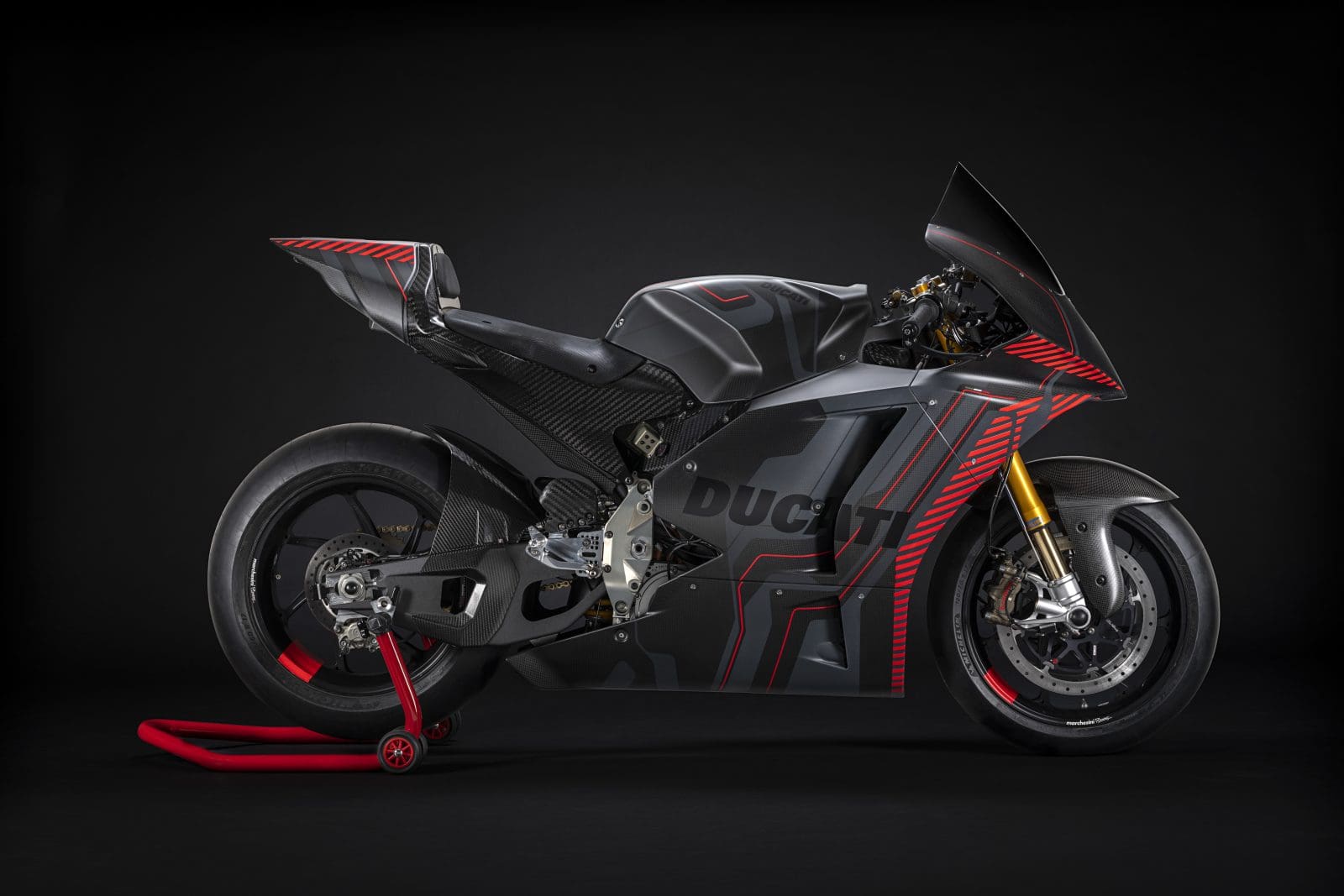
Ducati’s intentions
It came as a surprise to learn Ducati, the company which has used desmodromic valves in its internal combustion engines since the 1950s, was a willing supplier for the electric class when it was announced in 2021.
In fact, it was the Volkswagen Group, which acquired the Bologna factory in 2012, that was behind the push.
“There was a strong input from the group to work on the development of electric mobility for the future and to get some knowledge for us,” revealed Paolo Ciabatti, Ducati Corse Sporting Director. “It came as a perfect opportunity because we can develop and learn this new technology without having to put it into a production bike with the problems linked to the distance you can cover.”

The Ducati is around 40kg lighter that the previous Energica MotoE machine
While Ducati hasn’t indicated any immediate plans to produce an electric bike for road use, it’s clear the Volkswagen Group sees the potential in two-wheel electric machinery in years to come.
“It was important to create internal know-how to build this kind of motorcycle,” Ducati’s Head of Electrification Roberto Canè said. “The idea is to get all the knowledge for the future to design and produce roadbikes.”
Although a self-confessed petrol head, company CEO Claudio Domenicali acknowledges part of his job is “looking forward to define what the future will look like in five years, 10 years, and 20 years”. Therefore, exploring what is currently possible in the electric mobility field was of great interest to him, especially as partners within VW have access to cutting-edge technology.
“We do MotoE basically because we really want to understand what are the options, what is the potential, what are the limits of a full electric motorcycle with the current technology, the technology available in five years, and then in 10 years,” he said. “We still consider that as a kind of learning laboratory, where we develop understanding and develop skill. We need to understand what could be the value of an electric motorcycle to give to a client.
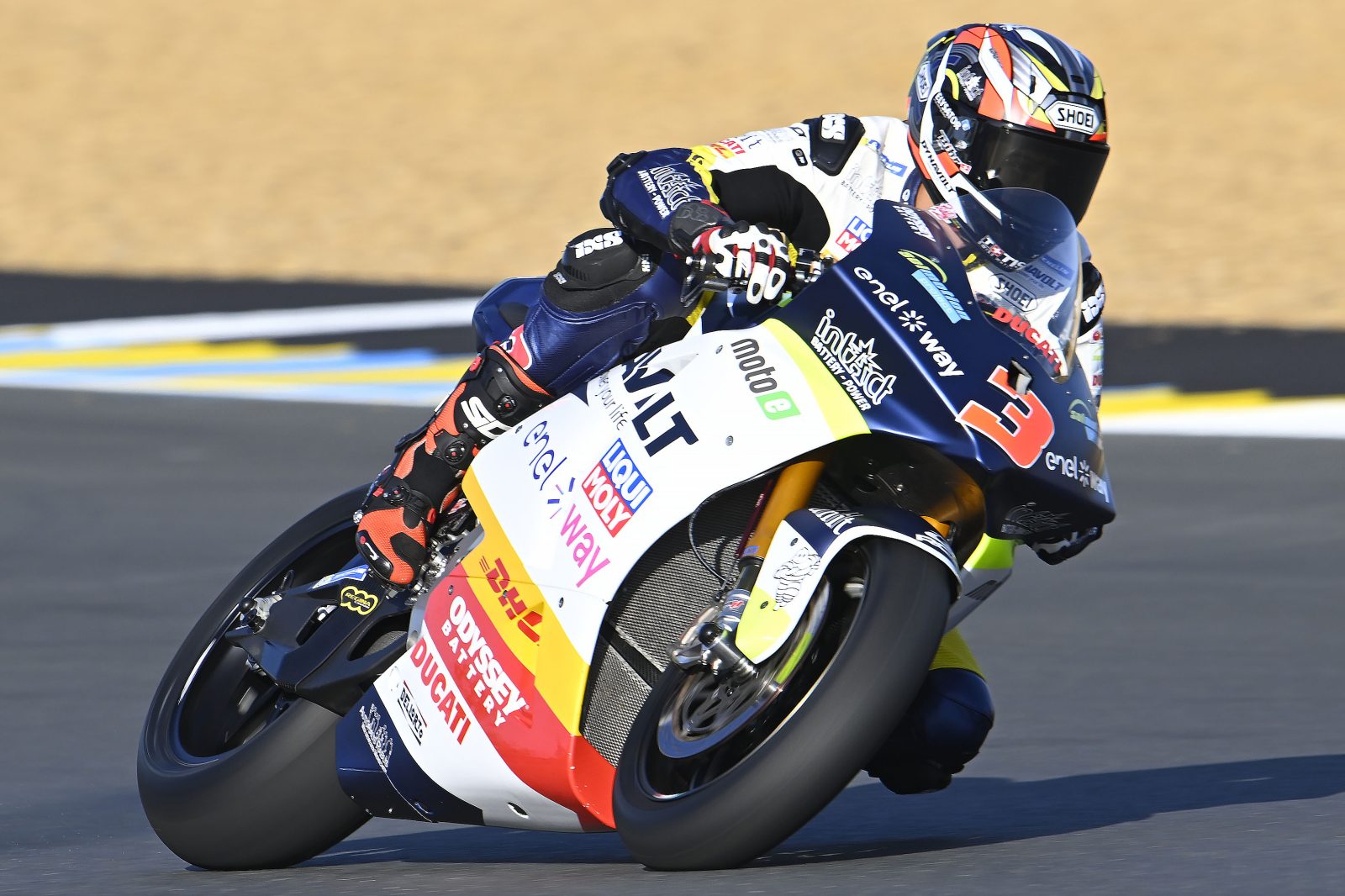
Swiss rider Randy Krummenacher on his way to third place as the new era of MotoE began at Le Mans
“We are already thinking of the next generation. And the next generation is already a big jump. It’s different from the internal combustion engine, which is a very refined technology – from one year to the other you just polish it. While with the other technology there are big steps. From the other side, the chemistry of the battery with the lithium is getting close to a limit now. Now we’re talking about solid-state batteries, which have very interesting potential.
“It’s very helpful to be part of this [Volkswagen] group. We are in contact with the Centre of Excellence inside VW in Salzgitter and our technical people make meetings with them. This centre is in contact because VW is a shareholder of QuantumScape, a US company. They are developing this solid-state technology. We are discussing if we can then use it for MotoE. It’s an interesting increase of energy density, which is still the main problem of the battery today. The energy density is not fantastic so the weight of the motorcycle has to be a compromise between a certain range, so either you limit the range to match or increase the weight.”
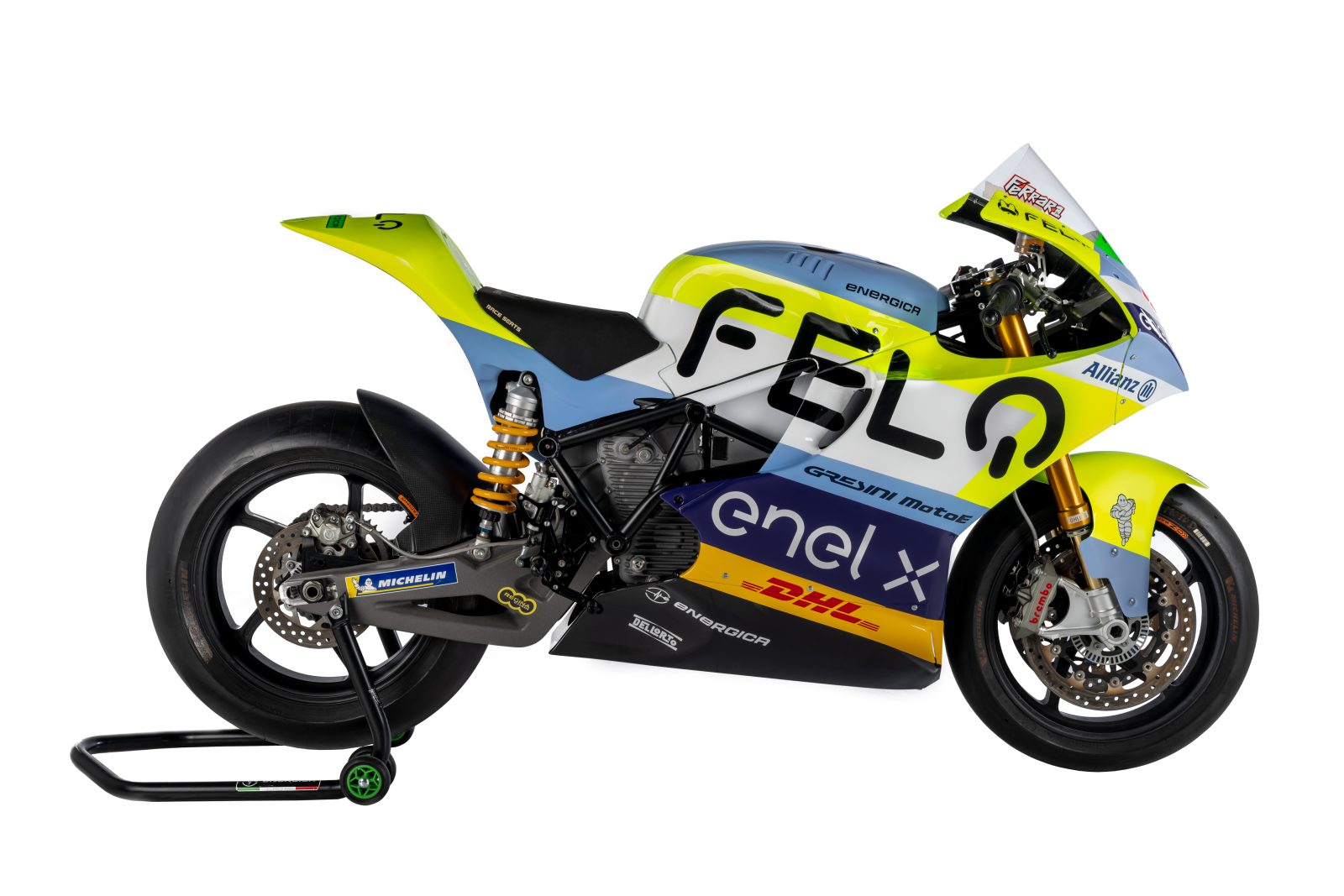
The Energica, which was the first machine used in MotoE racing
How does the V21L ride?
One benefit of running a factory that hones its craft in racing championships is the number of riders available to test your products. As well as former grand prix winner De Angelis, Ducati could call upon Davies, now a riders’ coach in the Aruba.it Racing world Superbike team, to put the V21L through its paces.
The 32-time world Superbike race winner tested the new bike once at Mugello and twice at Misano, where he was immediately impressed by the riding position.
“I’m used to riding the V4 R, which has a certain DNA to it riding position-wise. I felt slightly unbalanced with how the bike transfers with the superbike,” he said. “When I sat on the MotoE bike, instantly, without even riding it or touching the brake, I thought, ‘this riding position is super nice, very balanced.’
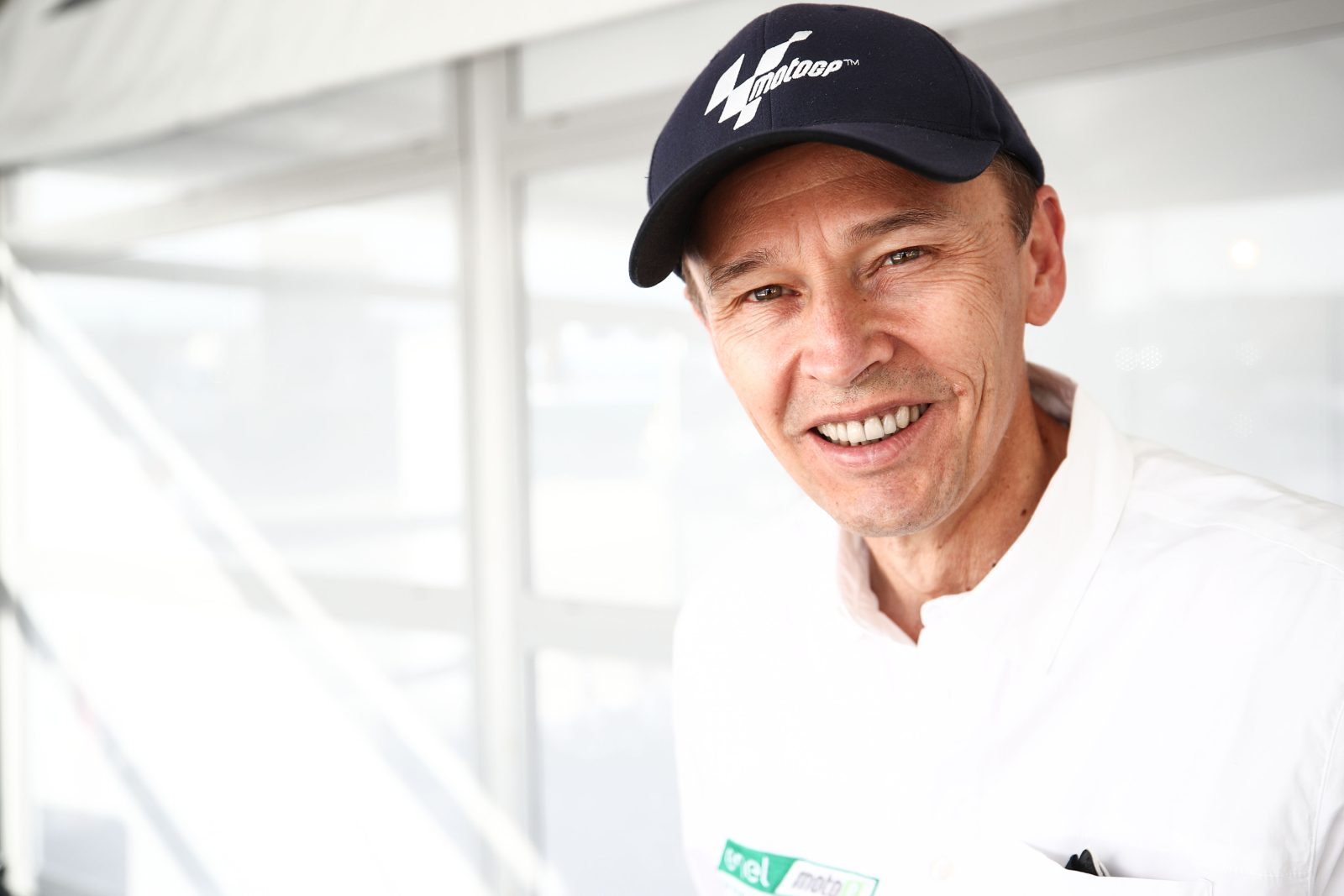
Nicolas Goubert, the MotoE head honcho
I asked the engineers: ‘What was the starting point for this?’ They said it was Pecco [Bagnaia’s] GP21 machine. Obviously, it was a different kettle of fish when I started riding it. But that balanced feeling remained, the way it transfers, the riding position when on the brakes was quite good for a bigger rider.”
Used to riding a 168kg WorldSBK machine, Davies noted it took some time to acclimatise to the added weight of the V21L – but not necessarily when changing direction.
“To be honest you don’t notice it where you’d think,” he said. “I started at Mugello. There’s no place where you go right to left and back as much as you do as Mugello.
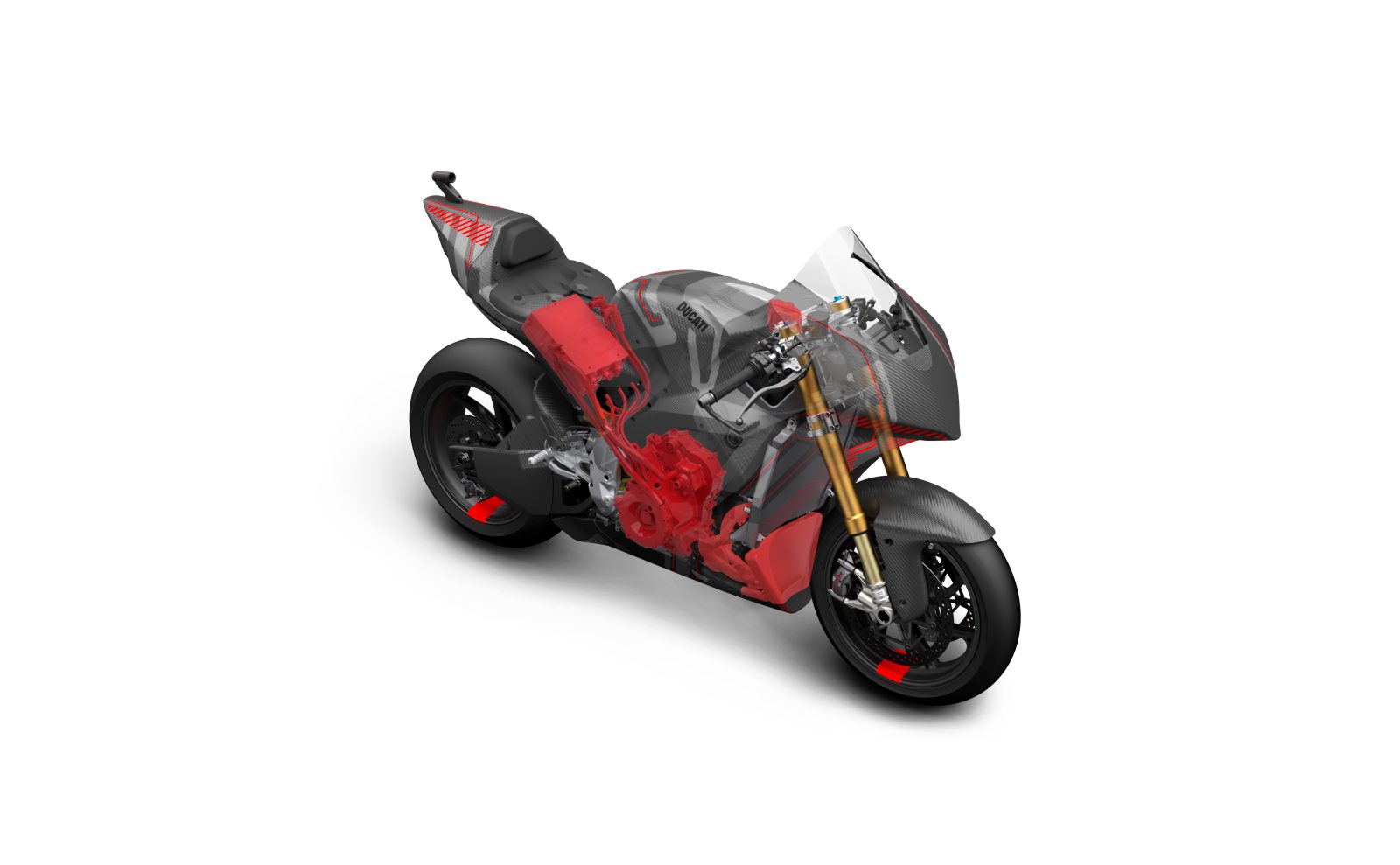
Liquid-cooling has huge benefits, particularly in terms of battery charging efficacy
“That wasn’t a big deal to me. Yes, you feel the weight but technique is everything. You do so much with the throttle to get the bike to change direction; it doesn’t feel like you’re throwing around 55kg more than a Superbike.
“What is different is the braking area. There’s nothing you can do about that as trying to stop 225kg is very different to stopping 170. Also, the tyre factor as well. The stopping distance is quite similar to Superbike, even if you’re travelling at Supersport speeds.
“The way the bike stops, it’s very difficult to lift the rear on a MotoE bike because there’s a bit too much weight there for that. You’ll get the front lock there (and) the front will give way.”
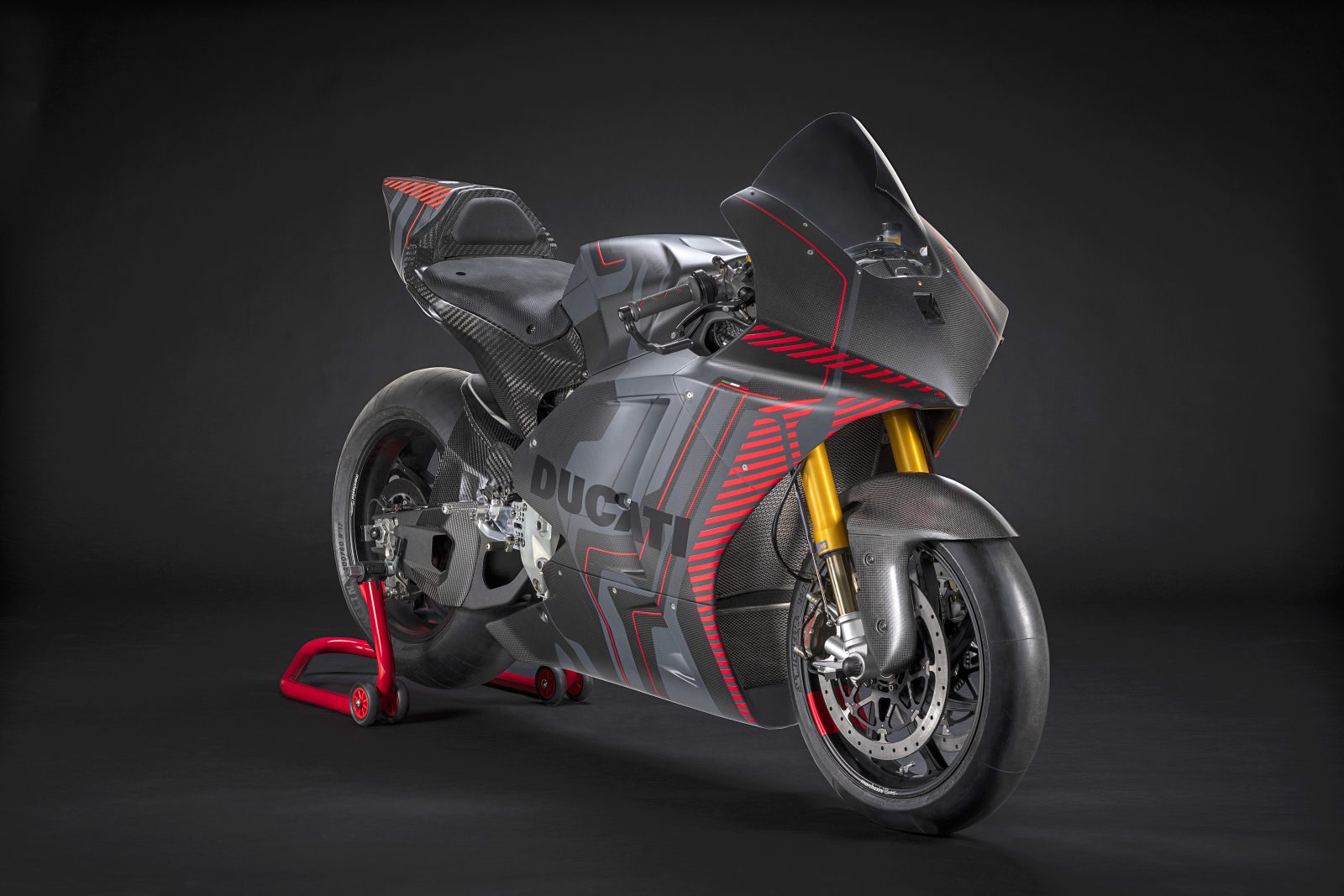
The Ducati electric racer isn’t a converted roadbike: it’s an out and out prototype
And once used to its power delivery and handling characteristics, Davies was quickly won over by the V21L.
“I absolutely loved it – more than I thought I was going to,” Davies said. “The bike’s quite simple and quite friendly to ride. You’ve got no gears, no clutch. You can really push it on.
“When you’re used to training on semi-automatic bikes, there are no complications. You can just rag the thing. It was like that. You can take liberties. The first day on it was hard.

Ducati never takes half measures, and the MotoE racer is another case-in-point
“A rider with small-bike experience – Moto3 and Moto2 – guys are committed mid-corner, so the bike is going to work quite well for them. I was undoing old habits, and trying to send it on through the mid-corner and pick up the throttle really early, rather than picking up the bike.
“You’re better getting on the gas earlier and feathering the throttle all the way to the exit. That was a lot to learn. But once I got the knack of it, I was away.”
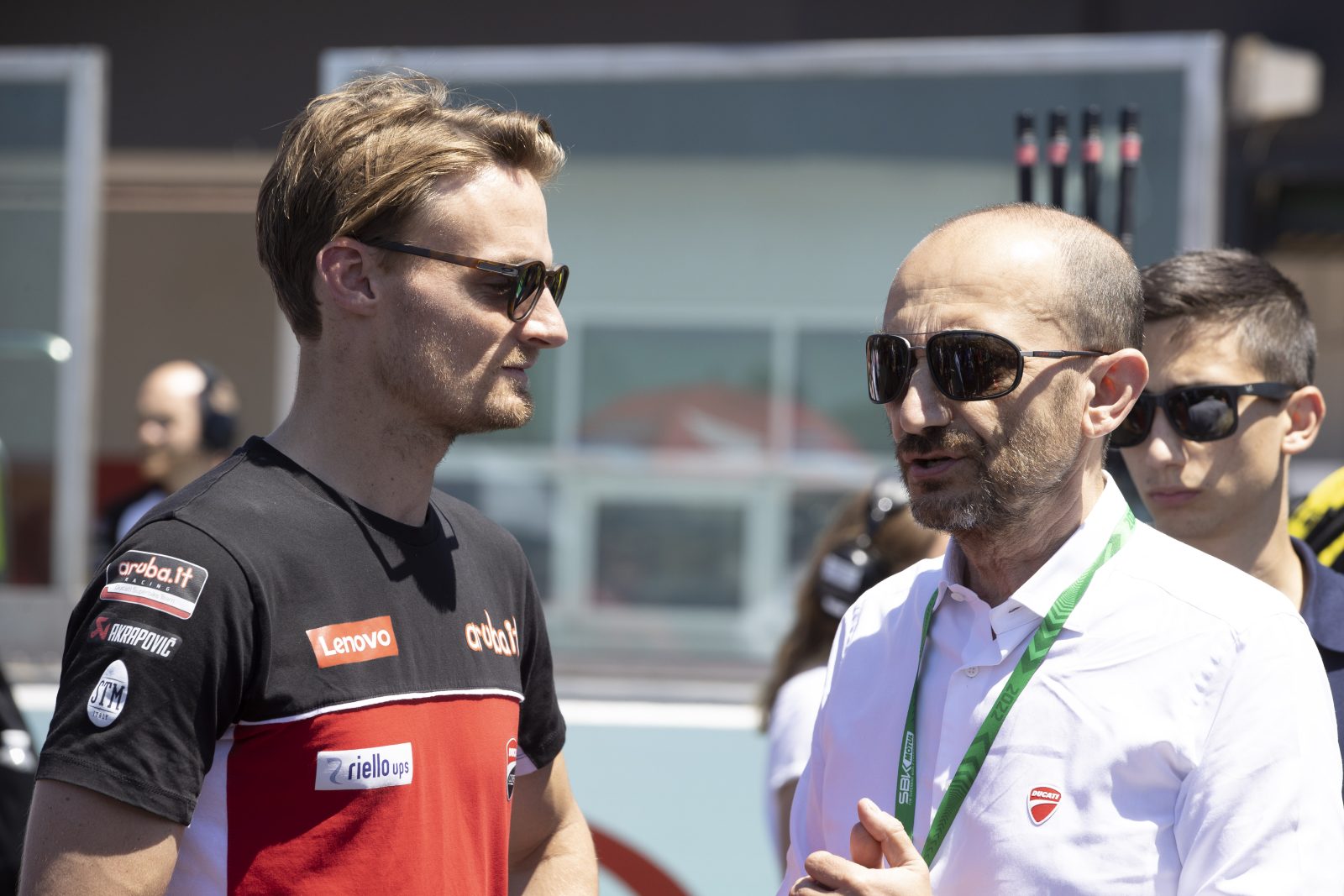
Chaz Davies (left) and Ducati CEO Claudio Domenicali
The sky’s the limit
MotoGP owner Dorna insists there is no grand plan to phase out the internal combustion engine. Instead, it views MotoE as a “parallel path” for future development, as development witnessed in the electric series runs in tandem with the current three grand prix classes.
Other motorcycle manufacturers have acknowledged the potential of the electric mobility market. In 2021 Honda, Yamaha, KTM and Piaggio Group signed a letter of intent to form the Swappable Batteries Motorcycle Consortium (SBMC), creating battery technologies common to all four brands for mopeds and small bikes – essentially working together to advance electric mobility. “It means they believe in it,” one person involved in MotoE told me back in 2021. By 2022 the SBMC had grown from four to 21 members.
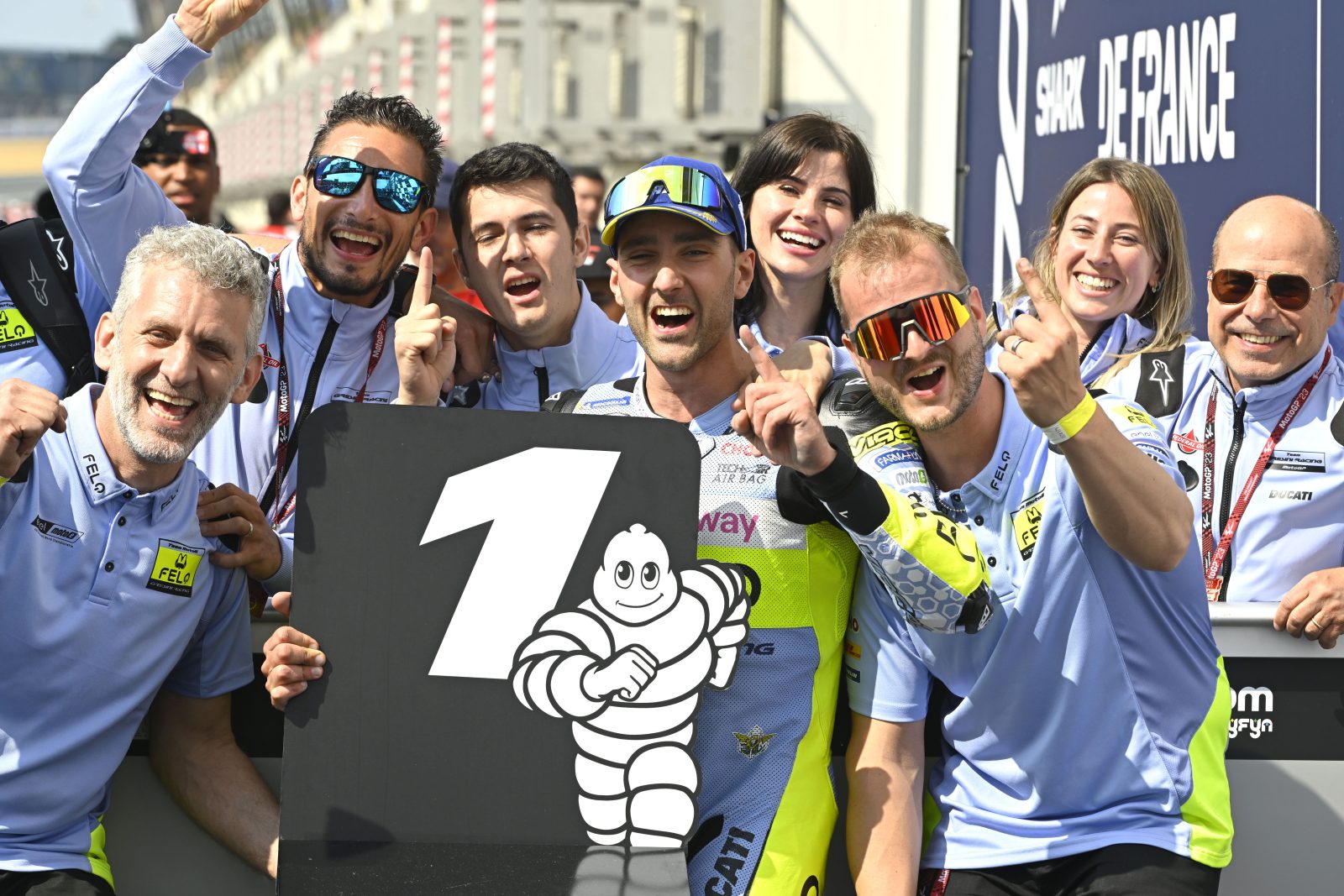
Matteo Ferrari won race two at Le Mans, as well as obliterating the old MotoE lap record
As Domenicali indicated, advancements in electric vehicle specs are likely to continue at a similarly rapid pace to recent years, with battery life a focal point of development. Goubert agrees.
“Whether we’ll see a continuation of progress in charging speed and bike weight, definitely yes,” said the Frenchman. “Whether or not we’ll gain 40kg, I cannot commit to that – for sure, we’ll get some. I won’t be surprised if it’s closer to 40 than 20. If it’s not four years, it’ll be five. Just a week ago CATL, who is one of the biggest battery makers, made an incredible announcement which said they had found a way to make a battery which has doubled the energy intensity, which is basically how you measure the energy you can put in 1kg of battery.
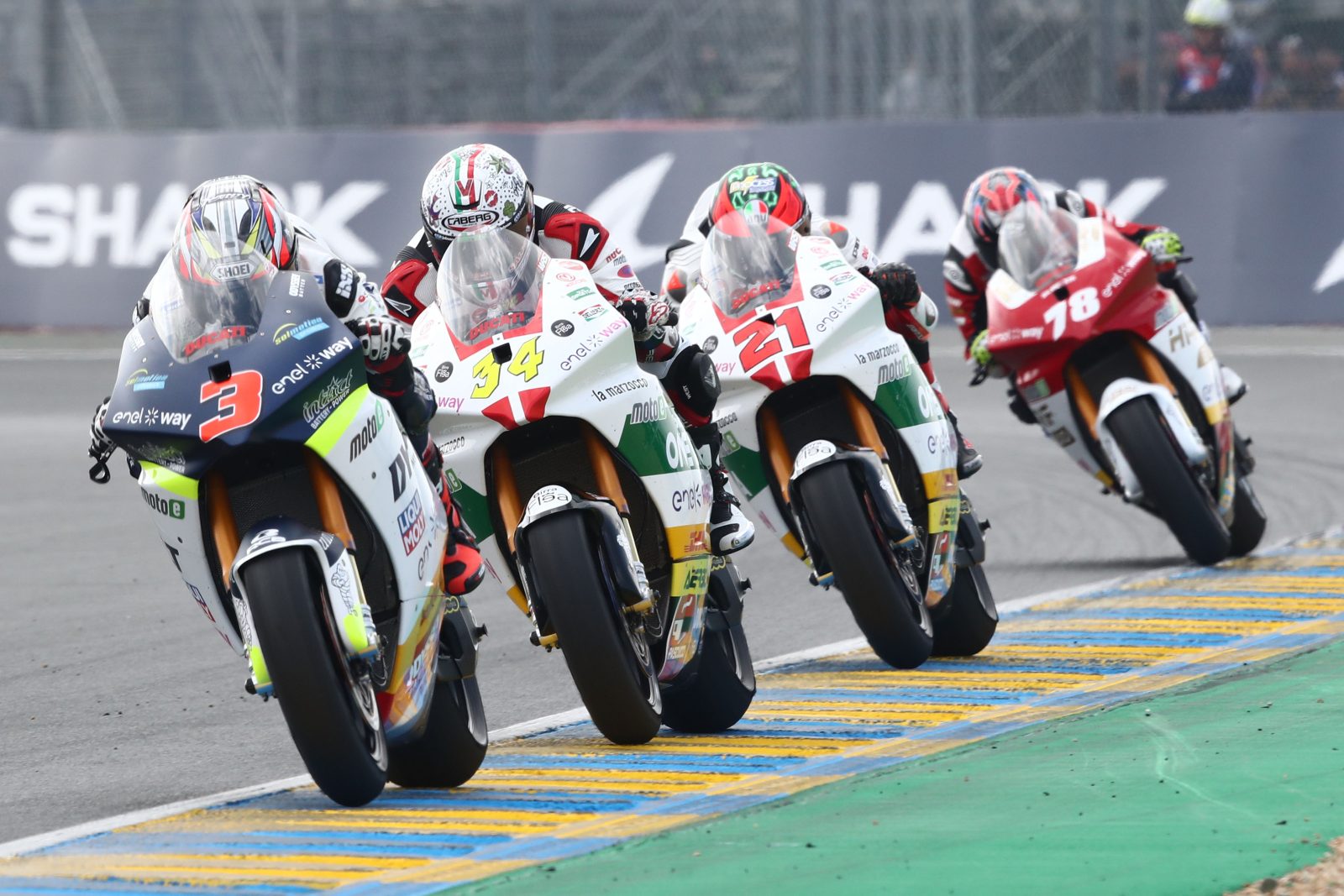
Electric freight train: Krummenacher, Kevin Manfredi and Kevin Zannoni
“I don’t know if that type of battery could be good for our bike because we need a lot of power intensity as well. But it’s one step, a huge step these guys have done, saying they could use it in electric bikes, small planes, so things are changing very quickly. With the number of people doing research around the world in the battery field, we’re going to benefit from it. We won’t be the first ones, because the market for bikes is small. But we won’t be far behind.
“It’s the same for charging time. You can read electric cars, you’ve got more power, 300kWh power to charge your battery. Our battery is 18kWh. If you have 100kW charge, you could charge it in 12 minutes. If you use a 300kW charge, you could charge it in four minutes. It’s not completely possible with the technology we have. But people are starting to talk about that. It means in a few years’ time it will be possible.
“Tesla launched the electric truck. On that, what is important is the speed at which you’re going to charge the huge battery you have. For sure we’re going to benefit from the huge improvement they make on that. I’m convinced in 10 years’ time our battery will be charged in less than 10 minutes.
“For us it’s not a big thing because we don’t need to charge so quickly. When I was a kid the petrol in my dad’s car, we needed to fill it up every 250km. It wasn’t a big deal because there were petrol stations everywhere. If you think one day there will be charging stations everywhere, and if you can charge reasonably quickly… I mean, to make 300km is good enough, especially at the speed we cannot drive at now!”
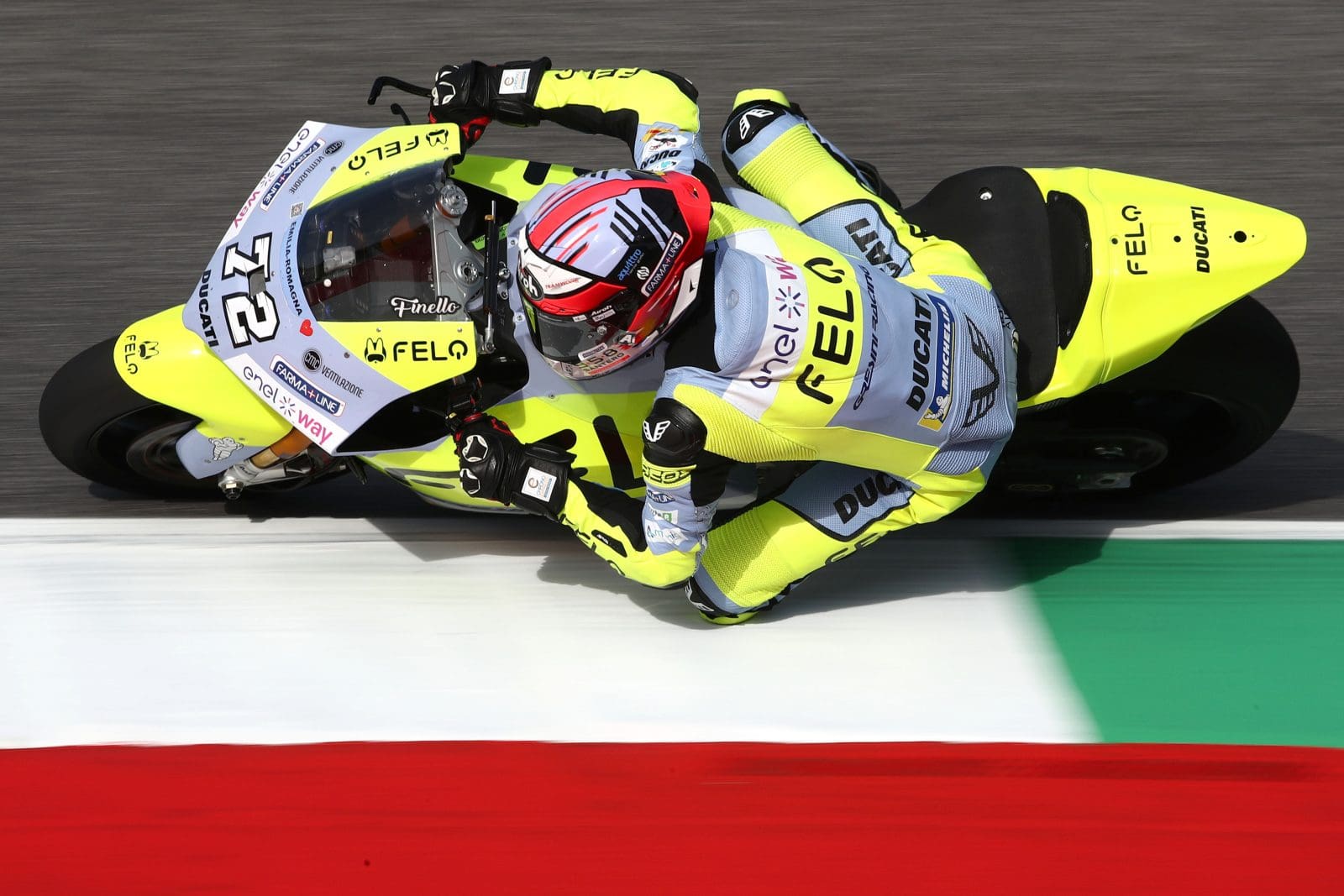
Test Neil Morrison + Photography Gold&Goose